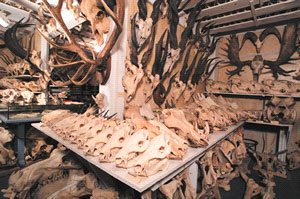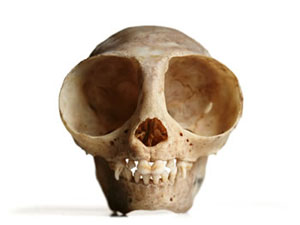 Photo Dong Lin, California Academy of SciencesWhat would you do if you saw an old guy, with a weather-beaten face and white hair, carving the flesh off the skulls of a dead seal lying in the sand on Ocean Beach, in San Francisco? Would you call the police?
Photo Dong Lin, California Academy of SciencesWhat would you do if you saw an old guy, with a weather-beaten face and white hair, carving the flesh off the skulls of a dead seal lying in the sand on Ocean Beach, in San Francisco? Would you call the police?
If you did, they probably wouldn't care, because you wouldn't be the first person to make that call. That might surprise you, even though it's illegal to collect the bodies of dead marine mammals. But chances are they would guess that it was Raymond Bandar. Since the 1960's, this eccentric icon of San Francisco has been collecting skulls under the permit of the California Academy of Sciences.
Ray is a volunteer at the Academy. He started collecting bones more than 50 years ago when him and his wife were returning from their honeymoon back east, where Ray had seen the skeletons at the American Museum of Natural History.
He was inspired, and along the way found an entire horse skeleton, some winter-killed sheep and cows. Ray piled them all into the backseat of their car, which was fine by his artist wife who thought they looked aesthetically pleasing. Little did she know, this was the beginning of the OTHER lifelong love affair.
Over the years Ray has collected a variety of bones including an elephant pelvis, moose antlers and a pair of deer horns eternally locked in a mortal clash over a doe. He also has baculum, or penis bones, of a variety of animals such as elephant seals and a grizzly. But the skull collection is what is most likely to leave a person speechless.

 Owl Monkey Skull, Photo by Dong Lin
Owl Monkey Skull, Photo by Dong Lin